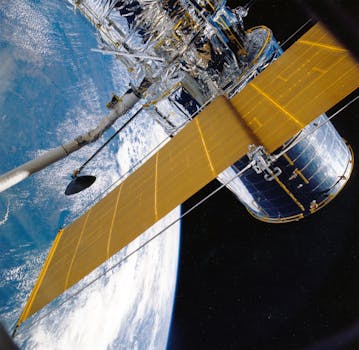
From Geostationary to Low Earth Orbit: The Evolution of Satellite Telecommunications in 2023
Satellite telecommunications have undergone significant transformations over the years, and 2023 is no exception. The shift from geostationary to low earth orbit (LEO) has revolutionized the way we communicate and access information. In this article, we will delve into the history of satellite telecommunications, the benefits of LEO, and the future of this technology.
Introduction to Satellite Telecommunications
Satellite telecommunications have been around for decades, with the first commercial satellite, Intelsat 1, launched in 1965. Since then, satellites have played a crucial role in global communications, providing connectivity to remote areas and enabling international communications. Geostationary satellites, which orbit the earth at an altitude of approximately 36,000 kilometers, have been the backbone of satellite telecommunications. However, with the advent of LEO satellites, the landscape of satellite telecommunications is changing rapidly.
The Benefits of Low Earth Orbit Satellites
LEO satellites offer several advantages over traditional geostationary satellites. One of the primary benefits is reduced latency. LEO satellites orbit the earth at an altitude of around 160-2,000 kilometers, which results in significantly lower latency compared to geostationary satellites. This reduced latency enables faster communication and makes LEO satellites ideal for applications that require real-time communication, such as video conferencing and online gaming.
Another advantage of LEO satellites is their ability to provide higher bandwidth and faster data transfer rates. LEO satellites can offer speeds of up to 1 Gbps, making them suitable for applications that require high-speed internet, such as streaming and cloud computing. Additionally, LEO satellites are less expensive to launch and maintain than geostationary satellites, making them a more cost-effective option for satellite telecommunications.
Applications of Low Earth Orbit Satellites
LEO satellites have a wide range of applications, from telecommunications to Earth observation and navigation. One of the most significant applications of LEO satellites is providing internet connectivity to remote and underserved areas. Companies like SpaceX and OneWeb are launching constellations of LEO satellites to provide global internet coverage, bridging the digital divide and enabling access to information and communication for millions of people around the world.
LEO satellites are also used for Earth observation, providing high-resolution images of the earth’s surface. This data is used for a variety of applications, including agriculture, forestry, and disaster response. Furthermore, LEO satellites are used for navigation, providing location information and timing signals for GPS and other navigation systems.
Future of Satellite Telecommunications
The future of satellite telecommunications is exciting and rapidly evolving. As technology advances, we can expect to see even more innovative applications of LEO satellites. One of the most significant developments is the integration of satellite telecommunications with 5G networks. This will enable seamless communication between satellite and terrestrial networks, providing faster and more reliable connectivity.
Another area of development is the use of satellite telecommunications for IoT (Internet of Things) applications. LEO satellites can provide connectivity to IoT devices in remote areas, enabling real-time monitoring and control of these devices. This has significant implications for industries such as agriculture, transportation, and energy.



